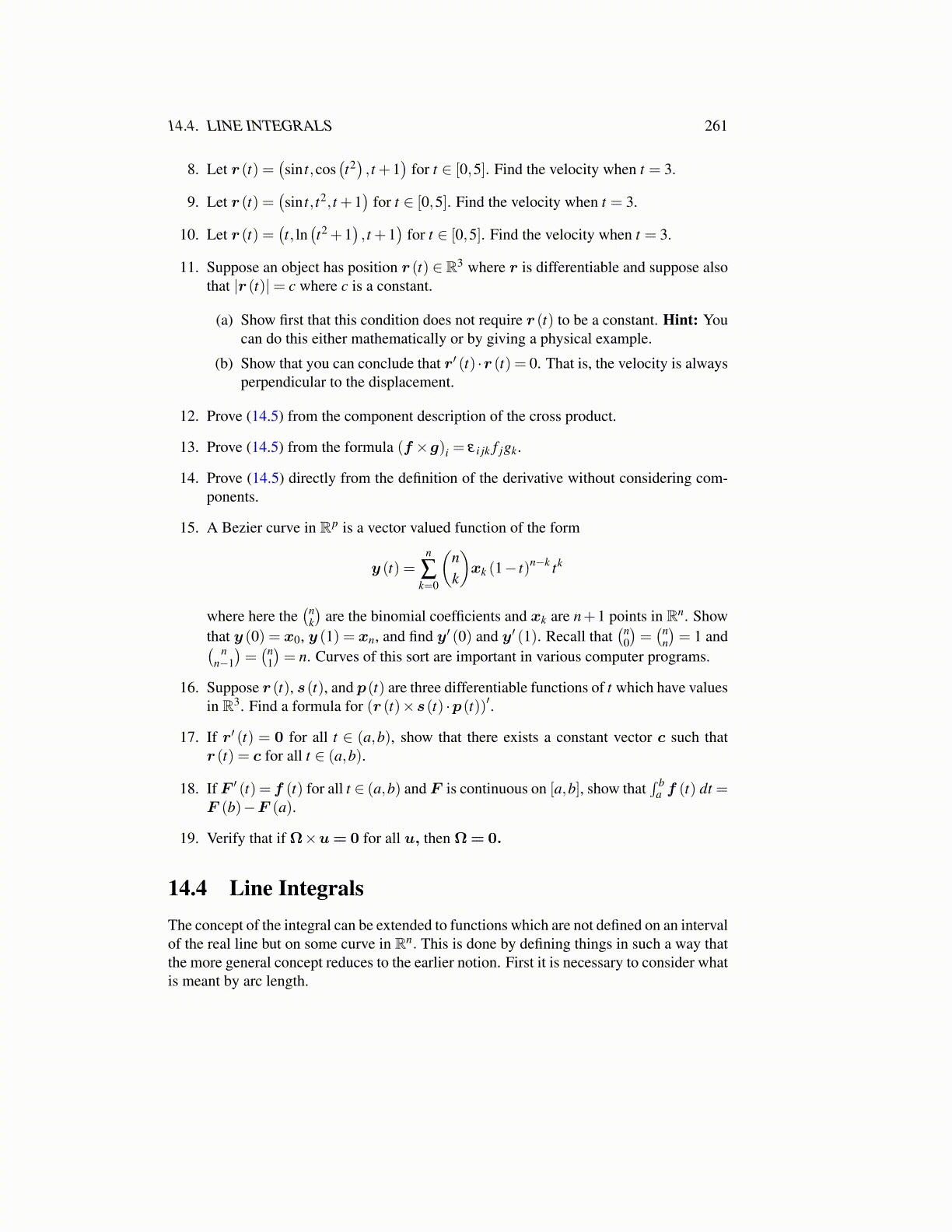
14.4. LINE INTEGRALS 261
8. Let r (t) =(sin t,cos
(t2), t +1
)for t ∈ [0,5]. Find the velocity when t = 3.
9. Let r (t) =(sin t, t2, t +1
)for t ∈ [0,5]. Find the velocity when t = 3.
10. Let r (t) =(t, ln
(t2 +1
), t +1
)for t ∈ [0,5]. Find the velocity when t = 3.
11. Suppose an object has position r (t) ∈ R3 where r is differentiable and suppose alsothat |r (t)|= c where c is a constant.
(a) Show first that this condition does not require r (t) to be a constant. Hint: Youcan do this either mathematically or by giving a physical example.
(b) Show that you can conclude that r′ (t) ·r (t) = 0. That is, the velocity is alwaysperpendicular to the displacement.
12. Prove (14.5) from the component description of the cross product.
13. Prove (14.5) from the formula (f ×g)i = ε i jk f jgk.
14. Prove (14.5) directly from the definition of the derivative without considering com-ponents.
15. A Bezier curve in Rp is a vector valued function of the form
y (t) =n
∑k=0
(nk
)xk (1− t)n−k tk
where here the(n
k
)are the binomial coefficients and xk are n+1 points in Rn. Show
that y (0) = x0, y (1) = xn, and find y′ (0) and y′ (1). Recall that(n
0
)=(n
n
)= 1 and( n
n−1
)=(n
1
)= n. Curves of this sort are important in various computer programs.
16. Suppose r (t), s(t), and p(t) are three differentiable functions of t which have valuesin R3. Find a formula for (r (t)×s(t) ·p(t))′.
17. If r′ (t) = 0 for all t ∈ (a,b), show that there exists a constant vector c such thatr (t) = c for all t ∈ (a,b).
18. If F ′ (t) = f (t) for all t ∈ (a,b) and F is continuous on [a,b], show that∫ b
a f (t) dt =F (b)−F (a).
19. Verify that if Ω×u= 0 for all u, then Ω= 0.
14.4 Line IntegralsThe concept of the integral can be extended to functions which are not defined on an intervalof the real line but on some curve in Rn. This is done by defining things in such a way thatthe more general concept reduces to the earlier notion. First it is necessary to consider whatis meant by arc length.